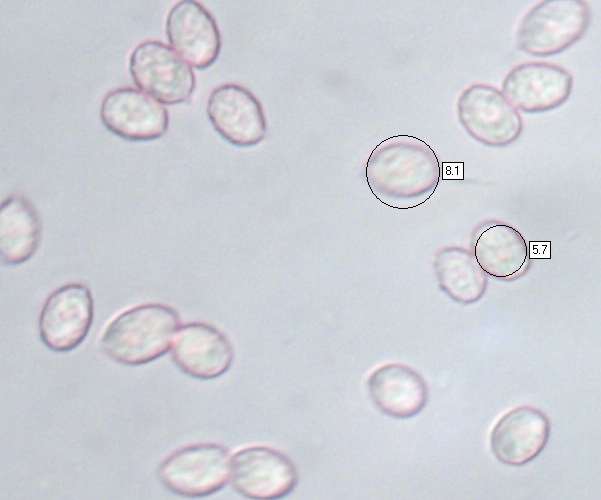Melanoleuca cinereifolia (Bon) Bon - Dune Cavalier
Phylum: Basidiomycota - Class: Agaricomycetes - Order: Agaricales - Family: Tricholomataceae
Distribution - Taxonomic History - Etymology - Identification - Culinary Notes - Reference Sources
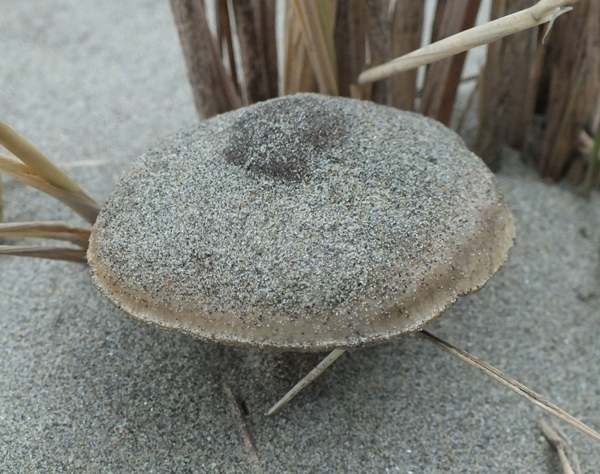
With a dark cap covering pallid gills, this is a tricky species to identify from macroscopic features alone, particularly because of its sand-dune habitat. Cap, gills and stem all become ingrained with sand, so that the only practical way to study features is to take a specimen home and give it a very thorough wash and blow dry.
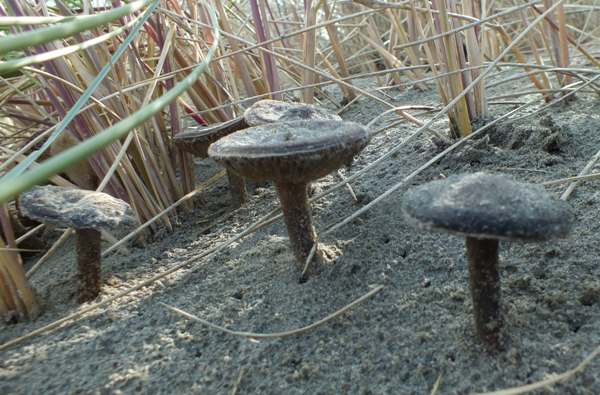
In the salt-laden coastal air, fruitbodies rapidly become desiccated; even so they usually persist for many weeks unless buried in a sandstorm.
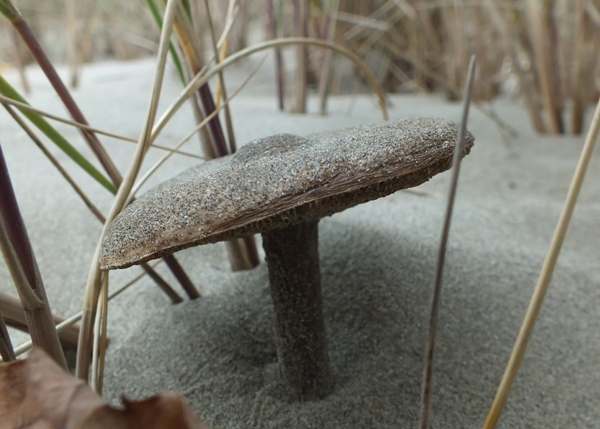
Distribution
Widespread in coastal sand dune systems but, perhaps because of the difficulty of identifying mushrooms that are covered in sand particles (especially when microscopic characters are crucial to separating similar species) not often recorded in Britain and Ireland, Melanoleuca cinereifolia occurs also throughout coastal regions of mainland Northern and Central Europe.
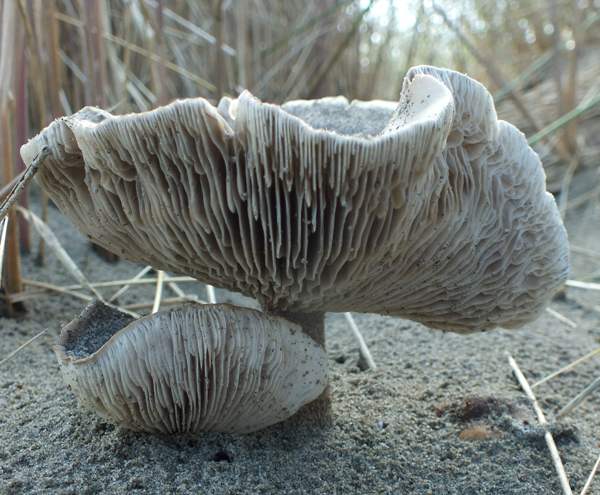
Taxonomic history
This mushroom was described in 1970 by French mycologist Marcel Bon, who initially did not propose it as a separate species but gave it the name Melanoleuca strictipes var. cinereifolia. It was eight years later, in a 1978 publication, that Bon proposed raising the status of this taxon to species level, giving it the scientific name Melanoleuca cinereifolia by which it is generally referred to today.
Synonyms of Melanoleuca cinereifolia include Melanoleuca strictipes var. cinereifolia Bon, Melanoleuca cinereifolia var. maritima Huijsman ex Bon, and Melanoleuca maritima Huijsman.
Etymology
The genus name Melanoleuca comes from the Ancient Greek words melas meaning black, and leucos meaning white. No cavalier mushroom is truly black and white, but many have caps whose upper surfaces are various shades of brown, with whitish gills beneath.
The specific epithet come from cinerea- meaning ash coloured (as in cinders), and -folia meaning leaves - but in the case of a mushroom this refers to its gills, of course.
Identification guide
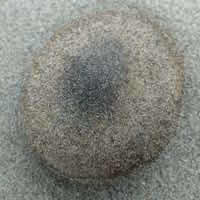 |
CapQuite variable from specimen to specimen and varying even more through the development life of the fruitbody, the cap is initially conical or convex, flattening but with a downturned margin and a low umbo; 3 to 9cm across when fully expanded. As with most of the cavalier mushrooms, the margin sometimes becomes slightly wavy. The cap surface is smooth; it is slightly tacky in wet weather but usually smothered in sand granules; grey-brown when moist but noticeably darker towards the centre, turning paler in prolonged dry weather. |
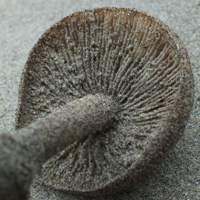 |
GillsSinuate (with a decurrent tooth), crowded; pale grey turning brown with age. Stem3 to 8cm long and 0.5 to 1cm diameter; base clavate; whitish, covered in longitudinal grey-brown fibrils; no stem ring. |
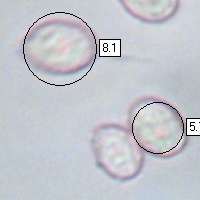 |
SporesEllipsoidal, warty, 7-9.5 x 4-6μm; amyloid. Spore printPale cream. |
Odour/taste |
Odour faintly mushroomy; taste salty! You'll just have to grit your teeth... |
Habitat & Ecological role |
Saprobic, almost invariably on coastal sand dunes with marram grass. |
Season |
July to November in Britain and Ireland. |
Similar species |
Melanoleuca melaleuca is macroscopically very similar, but it can be separated by microscopic examination of the spores, cystidia etc. More than thirty species in the Melanoleuca genus are recorded from Britain and Ireland, and most have brownish caps and whitish gills; separating them is a task for specialists. (Many of them are very rare finds.) |
Culinary Notes
Some of the so-called 'cavalier' fungi are reported to be edible but nothing special; however, as these kinds of mushrooms are notoriously difficult to identify I recommend that they should all be considered suspect and not collected for food.
Reference Sources
Fascinated by Fungi, 2nd Edition, Pat O'Reilly 2016, reprinted by Coch-y-bonddu Books in 2022.
Dictionary of the Fungi; Paul M. Kirk, Paul F. Cannon, David W. Minter and J. A. Stalpers; CABI, 2008
Taxonomic history and synonym information on these pages is drawn from many sources but in particular from the British Mycological Society's GB Checklist of Fungi.
Fascinated by Fungi. Back by popular demand, Pat O'Reilly's best-selling 450-page hardback book is available now. The latest second edition was republished with a sparkling new cover design in September 2022 by Coch-y-Bonddu Books. Full details and copies are available from the publisher's online bookshop...
